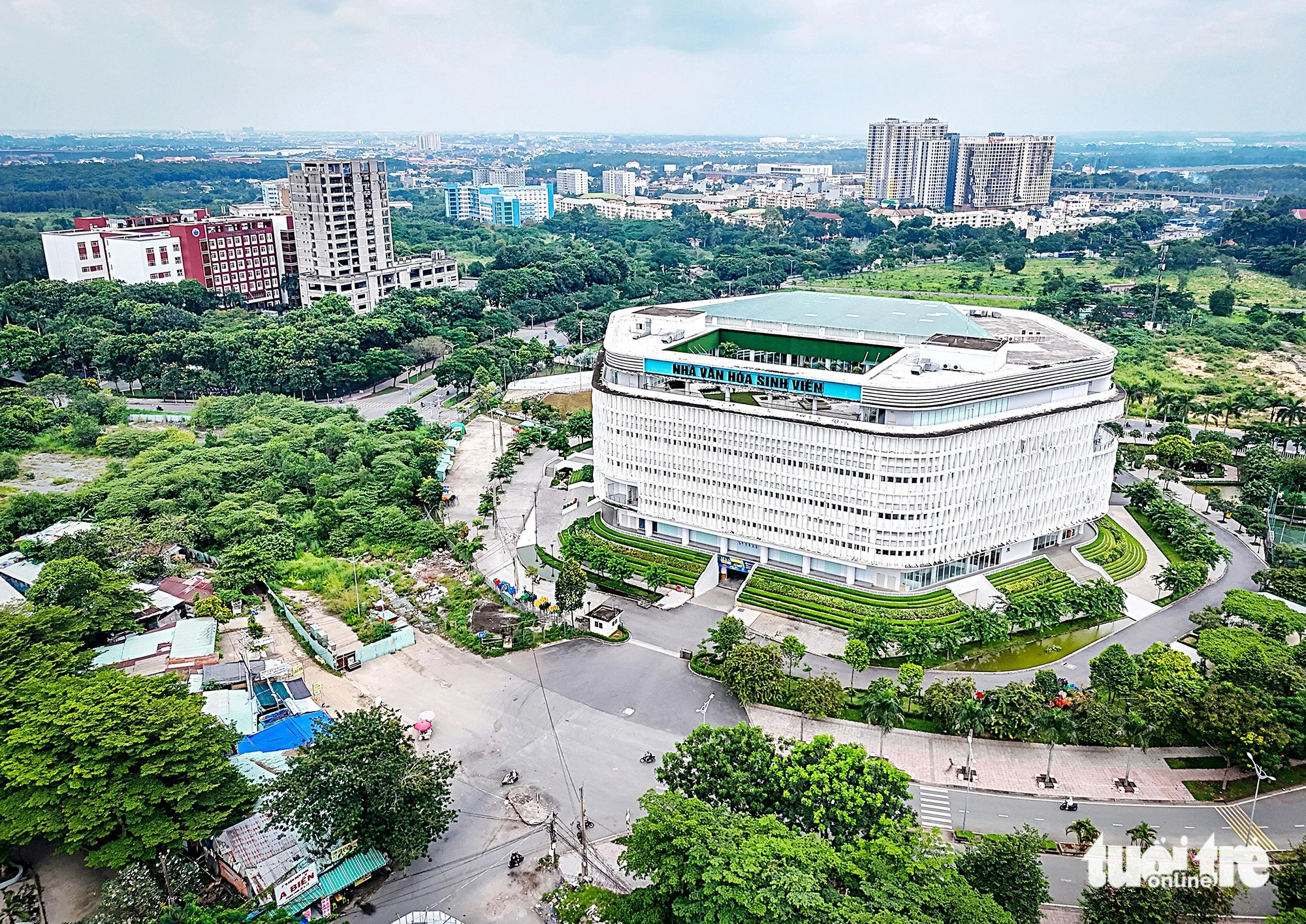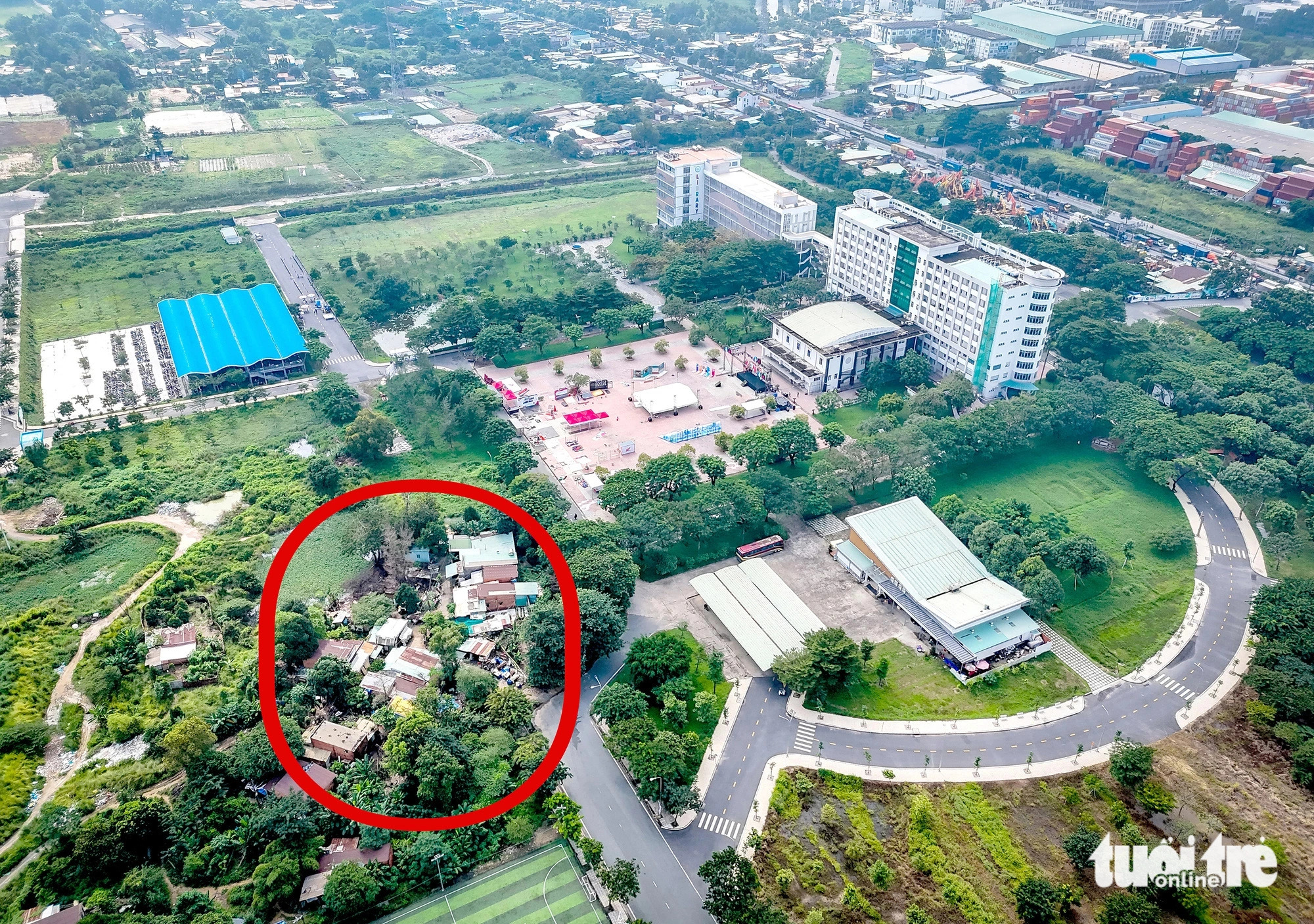Construction of the Vietnam National University - Ho Chi Minh City (VNU-HCM) in the southern region has made significant progress in the thirty years since the project broke ground, yet work on many of the complex’s facilities remains unfinished.
Covering 643.7 hectares, VNU-HCM urban area is located on the border of Thu Duc City – an administrative district of Ho Chi Minh City – and Di An City in Binh Duong Province.
Though construction of the complex remains unfinished, VNU-HCM suspended the launch of several projects on the site in 2019 and was forced to return nearly VND2 trillion (US$80.5 million) to the state budget due to obstacles related to zoning laws and land clearance.
While educational buildings, renovated roads, and new public infrastructure have continuously popped up on the site over the past three decades, traffic infrastructure remains incomplete.
A road connecting National Highway 1 with Nong Lam University, for example, is full of potholes, and at least seven other roads are in similar disrepair.
In other parts of the complex, land zoned academic and research facilities are overgrown and mixed with residential housing.
 |
| Several plots of land near the student cultural center in the VNU-HCM urban area have not been cleared. Photo: Chau Tuan / Tuoi Tre |
According to N.P., a freshman at VNU-HCM, the state of the roads makes the commute to school challenging, especially for students who rely on To Vinh Dien Street, the road leading to the University of Economics and Law, a road which passes through a makeshift wet market near the University of Social Sciences and Humanities, and University Avenue.
Addressing the poor road conditions, Associate Professor Nguyen Dinh Tu, chief of staff at VNU-HCM, said that there are plans to expand and upgrade several roads, including those leading to Nong Lam University and University Avenue, but land clearance issues continue to delay these projects.
Tu also attributed the absence of new construction projects in recent years and the return of some VND2 trillion to the state budget to land clearance and compensation, lengthy legal reviews, and bidding regulations.
VNU-HCM submits yearly requests to authorities in Thu Duc and Di An, urging them to facilitate land clearance plans and prioritize the construction of infrastructure and transportation projects within the university complex, but progress is slow.
 |
| A road linking Nong Lam University with the VNU-HCM urban area is full of potholes. Photo: Chau Tuan / Tuoi Tre |
This year, VNU-HCM asked both localities to clear areas near Isaac Newton Street, Ton That Tung Ring Road, the makeshift market, and University Avenue.
Both Thu Duc and Di An responded that they are speeding up land clearance and compensation efforts.
In Di An, authorities plan to clear some 31.6 hectares and 287 households in Dong Hoa and Binh Thang Wards.
They are also seeking approval to clear an additional five hectares near Nong Lam University, an intersection near the VNU-HCM main gate, and the Tan Quy Parish cemetery.
In Thu Duc, authorities plan to recover approximately 13 hectares from 200 households in Linh Xuan and Linh Trung Wards, according to Ho Van Phuoc, deputy head of the land clearance and compensation agency in Thu Duc.
According to the Thu Duc administration, the VNU-HCM project has been stalled due to inadequate land management, a lack of public agreement on compensation rates, delays in providing resettlement housing, and a limited budget to compensate those affected by the government's right to eminent domain.
Associate Professor Tu added that VNU-HCM set a goal to complete site clearance and create a modern, environmentally friendly space over the next six years, during which it will expand green areas, enhance the natural landscape, complete key roads to better connect Ho Chi Minh City and Binh Duong, as well as put into use facilities that meet international standards.
According to Associate Professor Vu Hai Quan, director at VNU-HCM, the delays in construction projects at the university complex were caused by slow planning approvals.
During a meeting between Prime Minister Pham Minh Chinh and VNU-HCM last November, VNU-HCMC proposed that PM Chinh continue authorizing VNU-HCM to handle the planning approvals – a proposal which had already been endorsed by the Ministry of Construction.
Aside from addressing infrastructure and planning issues, public security and environmental protection at VNU-HCM have been matters of concern for both residents and students.
In previous years, the VNU-HCM urban area was notorious for crime and illegal dumping due to being situated on the border between the two localities.
Lately, the area has seen a reduction in these issues. In 2022, VNU-HCM began working with local police to enhance security measures, including installing surveillance cameras at key locations and increasing patrols.
These efforts have led to a significant decline in crime and environmental violations.
The university complex spans an area of 643.7 hectares, which includes administrative offices, public service centers, member universities, research institutes, a national defense education center, sports facilities, dormitories, staff housing, and a science park.
In July 2023, Prime Minister Pham Minh Chinh approved a revised master plan for the university complex that includes a resettlement area for local residents.
The 10.03-hectare resettlement area, originally planned for educational use, will offer accommodations for approximately 5,000 affected households located in Thu Duc City.
Ho Chi Minh City and Binh Duong Province are responsible for site clearance and compensation works, in addition to approving detailed planning and managing the construction and land use of the resettlement area.
The central government also asked VNU-HCM and local authorities to prioritize funding for infrastructure development to support both students and staff.
Like us on Facebook or follow us on Twitter to get the latest news about Vietnam!















































